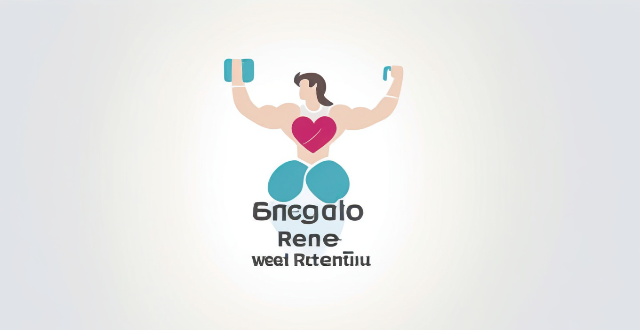Exercise Loss

What are some common misconceptions about weight loss and exercise ?
This text discusses common misconceptions about weight loss and exercise, including the idea that skipping meals leads to weight loss, spot reduction is effective, more exercise equals more weight loss, weight training makes women bulky, cardio is the best way to lose weight, fad diets offer quick fixes, all calories are created equal, and you can out-exercise a bad diet. It emphasizes the importance of understanding these misconceptions to adopt healthier habits and set realistic goals for improved health and wellness.

How often should I exercise to see weight loss results ?
To see weight loss results, start with low-intensity workouts and gradually increase intensity over time. Aim for at least 150 minutes of moderate-intensity exercise per week, mix up your workouts, and incorporate strength training. Consistency is key!

Can yoga help with weight loss ?
Yoga can be a valuable addition to a weight loss program due to its ability to improve muscle tone, increase flexibility, reduce stress levels, and promote mindful eating habits. Incorporating yoga into your routine along with other forms of exercise and healthy lifestyle habits can help you achieve your weight loss goals and improve overall health and well-being.

Can fitness trackers help me achieve my weight loss goals ?
Fitness trackers can support weight loss by tracking steps, heart rate, sleep, and calories. They provide motivation, accountability, and data for decision making. However, they have limitations such as overreliance on technology and accuracy concerns. It's important to use them wisely and in conjunction with other healthy habits for effective weight loss.

Can strength training help with weight loss ?
Strength training, involving the use of resistance to induce muscular contraction and build strength, can significantly contribute to weight loss by increasing metabolic rate, boosting post-exercise oxygen consumption (EPOC), improving body composition, and enhancing appetite control. Incorporating strength training into your routine, starting slowly and focusing on compound movements while staying consistent, can help achieve weight loss goals.

Is it better to do cardio or strength training for weight loss ?
When it comes to weight loss, both cardio and strength training have their benefits. Cardio exercises like running, cycling, and swimming can burn a significant number of calories in a short amount of time and improve cardiovascular health. Strength training helps build lean muscle mass, which raises your resting metabolic rate and burns more calories even at rest. While both types of exercise have their advantages, combining them into a well-rounded fitness routine is often the most effective approach for weight loss. A balanced routine that includes both cardio and strength training will improve various aspects of your fitness, including cardiovascular health, muscular strength, and flexibility.

What are the best exercises for weight loss ?
Losing weight requires a combination of a healthy diet and regular exercise. The best exercises for weight loss include cardiovascular exercises like running, cycling, swimming, and jumping rope; strength training exercises like squats, lunges, push-ups, and planks; and high-intensity interval training (HIIT) workouts like Tabata, burpees, and mountain climbers. By incorporating these exercises into your routine, you can burn calories, build muscle, and improve your overall fitness level.

How much weight can I expect to lose by exercising regularly ?
The amount of weight you can expect to lose through exercise depends on several factors, including your current weight, body composition, and the type and intensity of exercise you perform. High-intensity interval training (HIIT) and strength training are generally more effective for weight loss than low-impact activities like yoga or walking. In the short term, you may experience significant weight loss due to water loss and increased muscle tone, but for long-term weight loss, regular exercise combined with a healthy diet is essential. To maximize your weight loss potential through exercise, incorporate strength training, vary your workouts, increase intensity gradually, and stay consistent.

Patients with fatty liver should exercise reasonably and choose the most suitable exercise for themselves

Can aerobic exercise help me lose weight ?
Aerobic exercise, or cardio, is an effective way to lose weight. It increases heart rate and breathing, leading to higher calorie burn during and after the workout. Moderate-intensity aerobic activities also use fat as fuel, improving metabolic rate for further calorie expenditure at rest. Regular cardio can strengthen heart muscles for efficient blood pumping and contribute to muscle endurance. Types of aerobic exercises include running, cycling, swimming, walking, and group fitness classes like Zumba. To successfully incorporate aerobic exercise into a weight loss plan, it's recommended to start slowly, mix up activities, stay consistent, and combine with strength training. Potential challenges such as overexertion and plateaus in progress should be managed by adjusting routines. Overall, aerobic exercise can aid in weight loss when part of a balanced fitness regimen.

How does exercise improve cardiovascular health ?
This essay explores the ways in which exercise can improve cardiovascular health. It explains how regular physical activity strengthens the heart muscle, increases blood flow, and lowers blood pressure. The essay also discusses how exercise can reduce risk factors for cardiovascular disease, such as obesity, diabetes, and high cholesterol levels. Additionally, it highlights the positive effects of exercise on mental health and well-being, including stress reduction, depression management, and improved quality of life. Overall, the essay emphasizes the importance of regular exercise for a healthy lifestyle and encourages readers to incorporate physical activity into their daily routines.

Can organic food help with weight loss ?
Organic food may aid weight loss by reducing exposure to harmful chemicals, offering higher nutrient content, having lower calorie density, and improving digestion. Incorporating organic options slowly, choosing locally grown produce, reading labels carefully, planning meals, and including protein sources can support a healthy eating plan conducive to weight loss.

Is it possible to lose weight without doing any exercise ?
Losing weight without exercise is a topic of interest for many individuals who want to shed pounds but may not have the time, ability, or desire to engage in physical activities. While exercise has numerous health benefits and can significantly aid in weight loss, it's not the only factor that influences your body weight. Here are several ways you might lose weight without traditional forms of exercise: - Dietary Changes: Eating a calorie-deficient diet, focusing on whole foods, practicing portion control, using smaller plates, limiting processed foods and sugars, and reading labels for serving sizes and calorie counts. - Lifestyle Changes: Increasing Non-Exercise Activity Thermogenesis (NEAT) by being more active in daily life, improving sleep habits by establishing a sleep routine, and managing stress levels through meditation, deep breathing exercises, and yoga. - Behavioral Changes: Keeping a food diary, setting realistic goals with small, sustainable changes, seeking professional advice from a registered dietitian or nutritionist, and creating personalized plans based on unique health profiles and preferences.

Can exercise be used as a treatment for chronic diseases like diabetes or hypertension ?
Exercise can be used as a treatment for chronic diseases like diabetes and hypertension by improving insulin sensitivity, promoting weight loss, reducing cardiovascular risk, and providing stress relief. Recommended exercises include aerobic activities, resistance training, yoga, and tai chi. It is important to consult with a healthcare professional before starting an exercise program.

What are the benefits of aerobic exercise ?
Aerobic exercise, also known as "cardio," is a form of physical activity that increases your heart and breathing rate. It's any activity that keeps large muscles moving in a rhythmic manner for an extended period of time. Some examples include brisk walking, jogging, swimming, cycling, and dancing. The key benefits of aerobic exercise include improved heart health, weight management, boosted immune system, improved lung function, reduced stress, improved sleep, boosted mood, increased brain volume, slowed age-related cognitive decline, improved stamina, enhanced bone health, and promoted longevity. Incorporating aerobic exercise into your lifestyle can greatly improve your quality of life.

How do wearable technology devices aid in tracking and managing health through exercise ?
Wearable technology devices play a significant role in tracking and managing health through exercise. They monitor various aspects of physical activity, such as heart rate, steps taken, calories burned, and sleep patterns, providing valuable data for making informed decisions about fitness routines and overall health. Features like goal setting and progress tracking can motivate individuals to stick with their exercise routines and achieve their fitness goals more effectively.

Can aerobic exercise improve my cardiovascular health ?
Aerobic exercise is essential for maintaining and improving cardiovascular health, offering benefits such as strengthened heart muscle, lowered blood pressure, increased HDL cholesterol, reduced inflammation, weight management, improved circulation, and better blood sugar regulation. Regular aerobic activities like walking, jogging, cycling, swimming, or group fitness classes can significantly enhance overall heart health. The American Heart Association recommends at least 150 minutes of moderate-intensity aerobic exercise weekly, spread throughout the week, to achieve these benefits.

What are the long-term consequences of climate loss and damage ?
The article discusses the long-term consequences of climate loss and damage, including rising sea levels, extreme weather events, loss of biodiversity, impact on agriculture, disruption of industries, costs of mitigation and adaptation, health risks, displacement and migration, and impact on culture and heritage. It highlights the need for a global effort to reduce greenhouse gas emissions and adapt to the changing climate in order to create a more sustainable future.